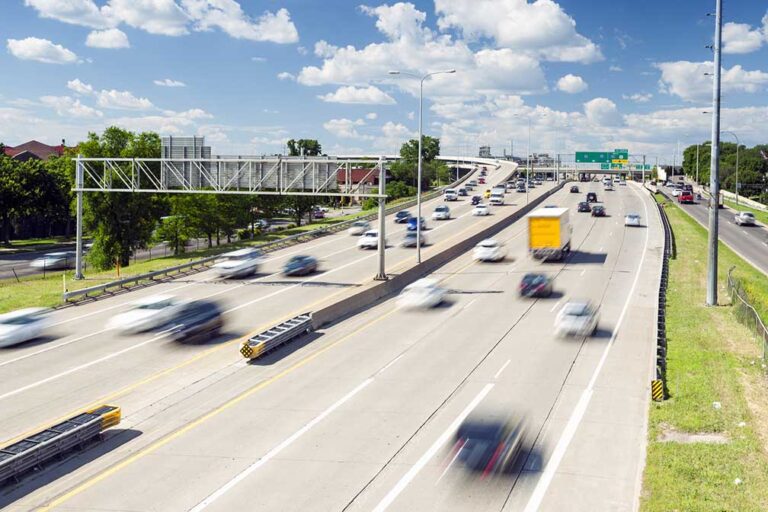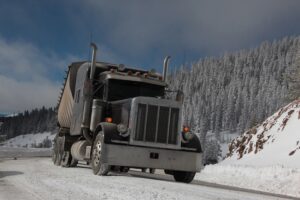WASHINGTON – The Federal Highway Administration (FHWA) has released a report to Congress detailing the agency’s plan to make America’s roadways safer and more accessible for all vehicles — from the tiniest Fiat to the largest big rigs.
The report identifies five overarching opportunity areas that will inform FHWA as it moves ahead with its efforts to increase the proportion of federally funded transportation projects that are routinely planned, designed, built and operated. The project is dubbed “Complete Streets.”
In FHWA’s Report to Congress, titled “Moving to a Complete Streets Design Model: A Report to Congress on Opportunities and Challenges,” FHWA adopts Complete Streets as its default approach for funding and designing the majority of federally funded roadways in the US.
Almost 70 percent of roads on the National Highway System are not access-controlled freeways, and these roads serve a wide variety of road users and purposes. These roadways, which include most arterials in urban areas and many small-town main streets, are the focus of FHWA’s Complete Streets initiative.
“A Complete Street is safe, and feels safe, for everyone using the street,” said Deputy Federal Highway Administrator Stephanie Pollack. “We can’t keep people safe on our roads if we don’t have safer roads and roads that slow down drivers to safe speeds. Through our Complete Streets initiative, FHWA will play a leadership role in providing an equitable and safe transportation network for travelers of all ages and abilities, including vulnerable road users and those from underserved communities that have faced historic disinvestment.”
FHWA has committed to addressing our country’s crisis in roadway fatalities, including the recent increases among motorists, cyclists and pedestrians, by focusing on the design, construction, and operation of safe roads and on countermeasures that encourage safe speeds. The Complete Streets design model embodies both elements, making it a key component of FHWA’s implementation of the U.S. Department of Transportation’s National Roadway Safety Strategy.
The National Roadway Safety Strategy is a Departmental roadmap to address the national crisis in traffic fatalities and serious injuries and adopts the Safe System Approach that holistically addresses safety through multiple layers of protection.
One goal of FHWA’s Complete Streets initiative is to increase the proportion of transportation projects that states and other federal-aid highway funding recipients routinely plan, design, build, and operate that are safe and accessible for all users. As the Report to Congress documents, FHWA has begun assessing and revising its own policies, regulations, processes, and practices to make it easier for state and local agencies to advance and build Complete Streets.
FHWA’s Complete Streets initiative will address five overarching opportunity areas:
- Improve data collection and analysis to advance safety for all users;
- Support rigorous safety assessment during project development and design to help prioritize safety outcomes across all project types;
- Accelerate adoption of standards and guidance that promote safety and accessibility for all users and support innovation in design;
- Reinforce the primacy of safety for all users in the interpretation of design standards, guidelines, and project review processes; and,
- Make Complete Streets FHWA’s default approach for funding and designing non-access-controlled roadways.
The Bipartisan Infrastructure Law defines Complete Streets standards or policies as those which “ensure the safe and adequate accommodation of all users of the transportation system, including pedestrians, bicyclists, public transportation users, children, older individuals, individuals with disabilities, motorists, and freight vehicles.”
The Bipartisan Infrastructure Law provides new tools and resources that allow states and local governments to build Complete Streets. This includes a requirement that states and metropolitan planning organizations use at least 2.5 percent of their planning funding on activities related to Complete Streets or travel on foot, by bike, in a vehicle or using public transit. The Bipartisan Infrastructure Law also continues to provide funding for Complete Streets activities through Rebuilding American Infrastructure with Sustainability and Equity (RAISE) grants and the National Highway Performance Program.
Surface Transportation Block Grant Program funds can also be used for Complete Streets implementation. FHWA recently released guidance for the Highway Safety Improvement Program, which can be used for Complete Streets projects and which received an additional $4 billion in funding under the Bipartisan Infrastructure Law. The Bipartisan Infrastructure Law also created a new $6 billion Safe Streets and Roads for All competitive grant program for local governments, details of which will be announced in the coming months.
FHWA’s Report to Congress, titled “Moving to a Complete Streets Design Model: A Report to Congress on Opportunities and Challenges,” is FHWA’s response to a report accompanying the Departments of Transportation, and Housing and Urban Development, and Related Agencies Appropriations Bill of 2021 which stated that FHWA should review its current policies, rules, and procedures to determine their impact on safety for road users.
Information on FHWA’s Complete Streets efforts and initiatives can be found by clicking here.
The Trucker News Staff produces engaging content for not only TheTrucker.com, but also The Trucker Newspaper, which has been serving the trucking industry for more than 30 years. With a focus on drivers, the Trucker News Staff aims to provide relevant, objective content pertaining to the trucking segment of the transportation industry. The Trucker News Staff is based in Little Rock, Arkansas.
















Should get these trucking company do better driver training. Companys just putting new drivers in trucks without training and see drivers trainers that can’t back a truck to